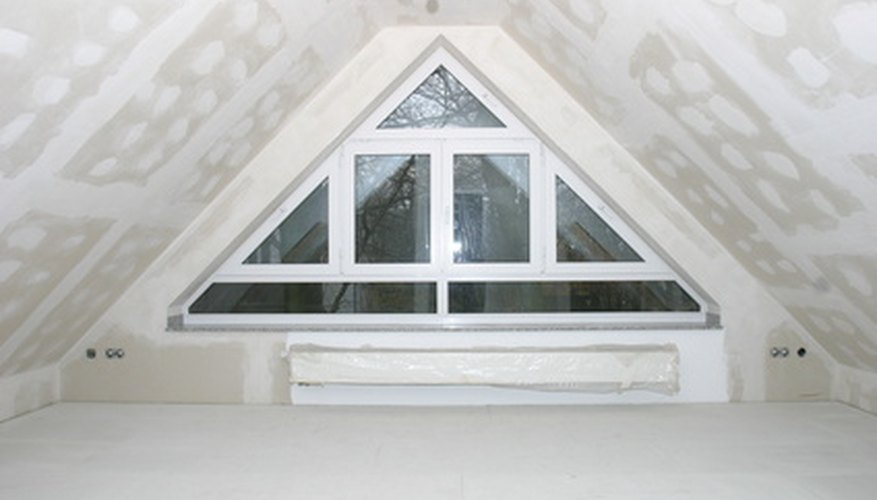A typical roof truss has six main parts. The upper cords, or rafters, form the peak of the roof. The lower cord, or joist, forms the lower horizontal of the triangle, supporting the attic floor and top floor's ceiling. The centre vertical brace is known as the king stud, and angling off from it are two pieces supporting the upper cords; these pieces are known as webbing. This pattern provides a very strong frame but severely limits the space in your attic. To modify the truss, you will need to provide support for the upper cords, then remove the king stud and webs.
- A typical roof truss has six main parts.
- The centre vertical brace is known as the king stud, and angling off from it are two pieces supporting the upper cords; these pieces are known as webbing.
Measure the width of the truss. Measure in from each side wall a distance equal to 1/4 of the total width of the truss; mark the lower cord at these two points.
At both of these marks, position a 2-by-4 so that the bottom is on the floor and the top extends upward to a point above the bottom edge of the upper cord. Position the 2-by-4 so that the mark you made is on its inside edge, with the width of the board against the upper and lower cords on the outside of the mark, toward the eaves. Mark a line on each 2-by-4 at the top of the lower cord and the angled bottom of the upper cord.
Use a circular saw to cut the 2-by-4s along these lines. Fit the first resulting brace inside the truss (at the point you marked on the lower cord), with the flat bottom end on top of the lower cord and the angled edge against the bottom of the upper cord, or rafter. Use a framing nail gun to nail the board in place, nailing through the ends into the upper and lower cords. Repeat on the other side of the truss with the remaining brace.
- At both of these marks, position a 2-by-4 so that the bottom is on the floor and the top extends upward to a point above the bottom edge of the upper cord.
- Fit the first resulting brace inside the truss (at the point you marked on the lower cord), with the flat bottom end on top of the lower cord and the angled edge against the bottom of the upper cord, or rafter.
Use a reciprocating saw to cut the web and king stud braces from the truss along the lines of the upper and lower trusses to open up the centre of the space.
